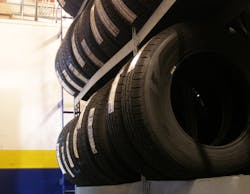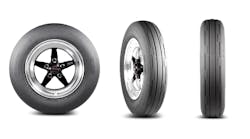The MTD exclusive is provided by John Healy, managing director and research analyst with Northcoast Research Holdings LLC, based in Cleveland, Ohio. Healy, who writes MTD's monthly Marketplace column, covers a variety of subsectors of the automotive industry.
Following recent trends, our latest conversations with dealers leave us with a view that retail sell-out trends are continuing to trend downward, showing decreases on a sequential basis since this past October.
In November, sell-out trends also entered negative territory for the first time since June 2020 as surveyed dealers reported an average unit sales decrease of 3.6% versus November 2019 levels.
The month marked the shift away from recovery to another dip in volume, although not as dramatic as the fall-off that occurred in March and April.
Overall, our tire demand index is down 20% year-over-year.
Our contacts attribute recent declines to a second wave of COVID-19, which has caused some state and local governments to bring back business restrictions. This ultimately impacts consumer behavior, including driving patterns, as well as the overall economic environment.
The impact of shutdowns
With the recent demand declines prompted by additional spikes in COVID-19 infections, we looked at a number of data points to assess the health of automobile travel, which correlates to tire usage.
In looking at state reopenings and subsequent pausings and closings in recent weeks, at press time we see that 31 states have reopened or are mostly open again, while 11 states have paused their reopenings.
Eight states, which represent around 25% of the total U.S. population, are in shutdown mode.
While there has been a recent increase of COVID-19 infections in many local areas within states, some governors appear hesitant to reintroduce sweeping economic restrictions and are instead allowing county and municipal governments to impose their own restrictions.
That being said, we expect to see further curtailment of driving in the near term as COVID-19 cases remain at record levels.
Turning to miles driven, there has been a significant regression in recent months. October saw an average year-over-year decline of 9.1%, while November brought an average year-over-year decline of 13.1%.
In addition, Apple’s Mobility Trends Report has indicated that the number of people who are searching for driving directions has fallen, with month-by-month declines starting during the late-third quarter of 2020. (Mobility trends bottomed out in April 2020.)
As of press time, mobility trends were down 13% compared to baseline numbers.
Tier update
Our latest research shows that budget-conscious consumers continue to shift to the value tier.
In fact, tier-three brands are enjoying the most growth at the moment, which is unsurprising due to persistent uncertainty due to the recent spike in COVID-19 cases around the country, the reality of the long-term economic backdrop and changes in power at the federal government level.
We also note that as customers seem to have settled on looking for both value and performance, they are leaning heavily toward value. We believe this trend will continue in the near future. But when more confidence is instilled in consumers, a shift back to tier-one and tier-two brands could follow.
We continue to be impressed by the discipline that tier-one and tier-two manufacturers have shown in their efforts to balance volume versus price, but also recognize the fact that several tire manufacturers have elected to raise consumer tire prices over the last couple of months.
At the dealer and distributor level, we also continue to be impressed by the tactical approach to inventory allocation that we are seeing given potential legislative action in the form of tariffs, recent pricing actions by suppliers and increasingly volatile raw material rates.
Essentially, downstream players have been successfully directing orders in a way that capitalizes on pricing spreads in the market.
Natural rubber rebound?
The basket of raw materials to make a standard replacement tire has fallen by 1.6% on a year-over-year basis. Holding current spot prices flat would yield a 2.1% year-over-year decrease in input costs needed to “build a tire.”
We also note that raw material cost pressures have moderated, as last month’s raw material prices were projected to fall by the same amount as our most recent observations.
Looking at each component individually, carbon black’s cost pressures continue to subside, following recent trends.
Crude oil has experienced extreme cost pressures over the last eight months, with the price of oil being down an average of 38% on a year-over-year basis. (Oil prices dropped nearly 30% this past November.)
Synthetic oil prices have trended downward, as well. But natural rubber prices have risen significantly in recent months.
John Healy is a managing director and research analyst with Northcoast Research Holdings LLC, based in Cleveland, Ohio. Healy covers a variety of subsectors of the automotive industry.




